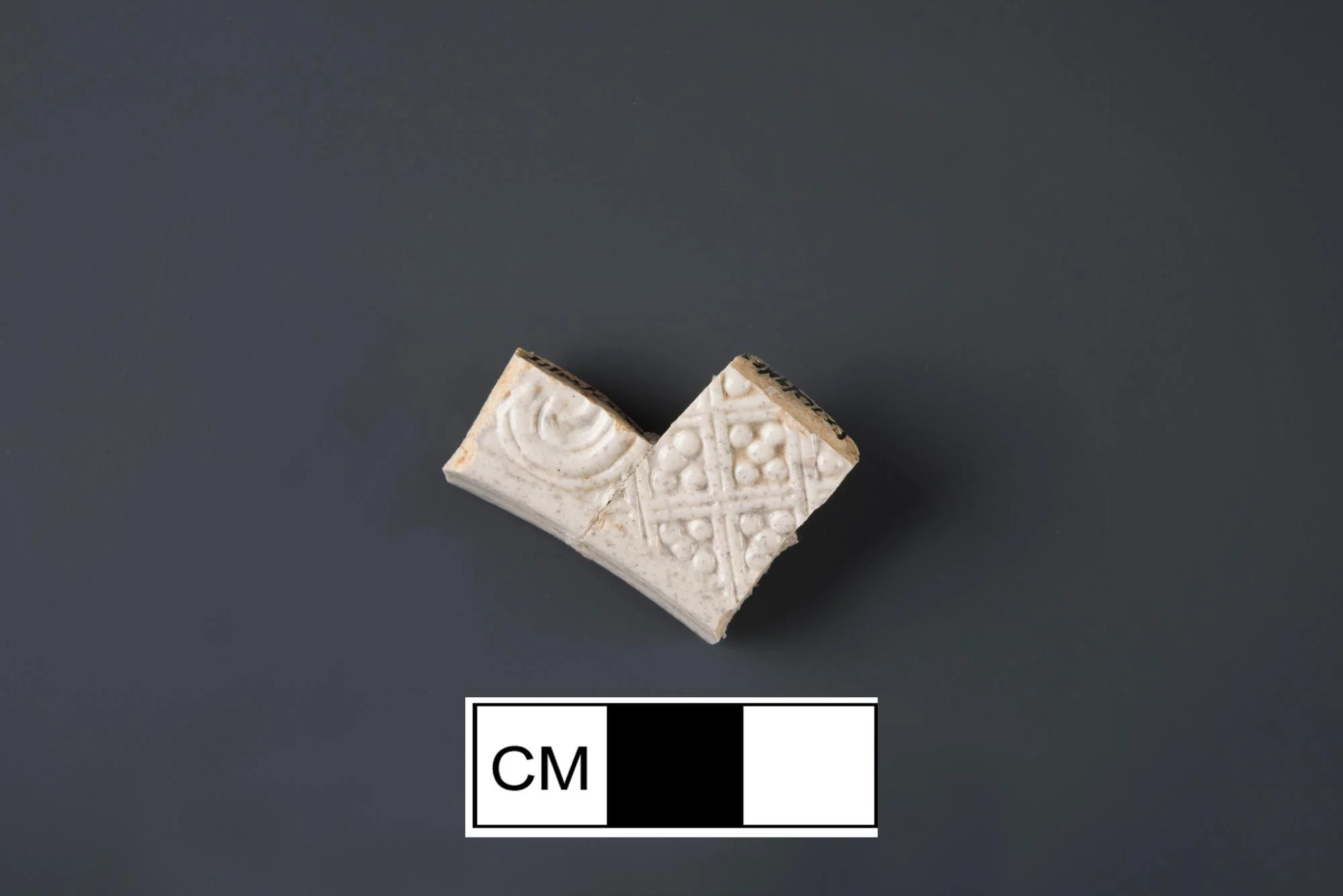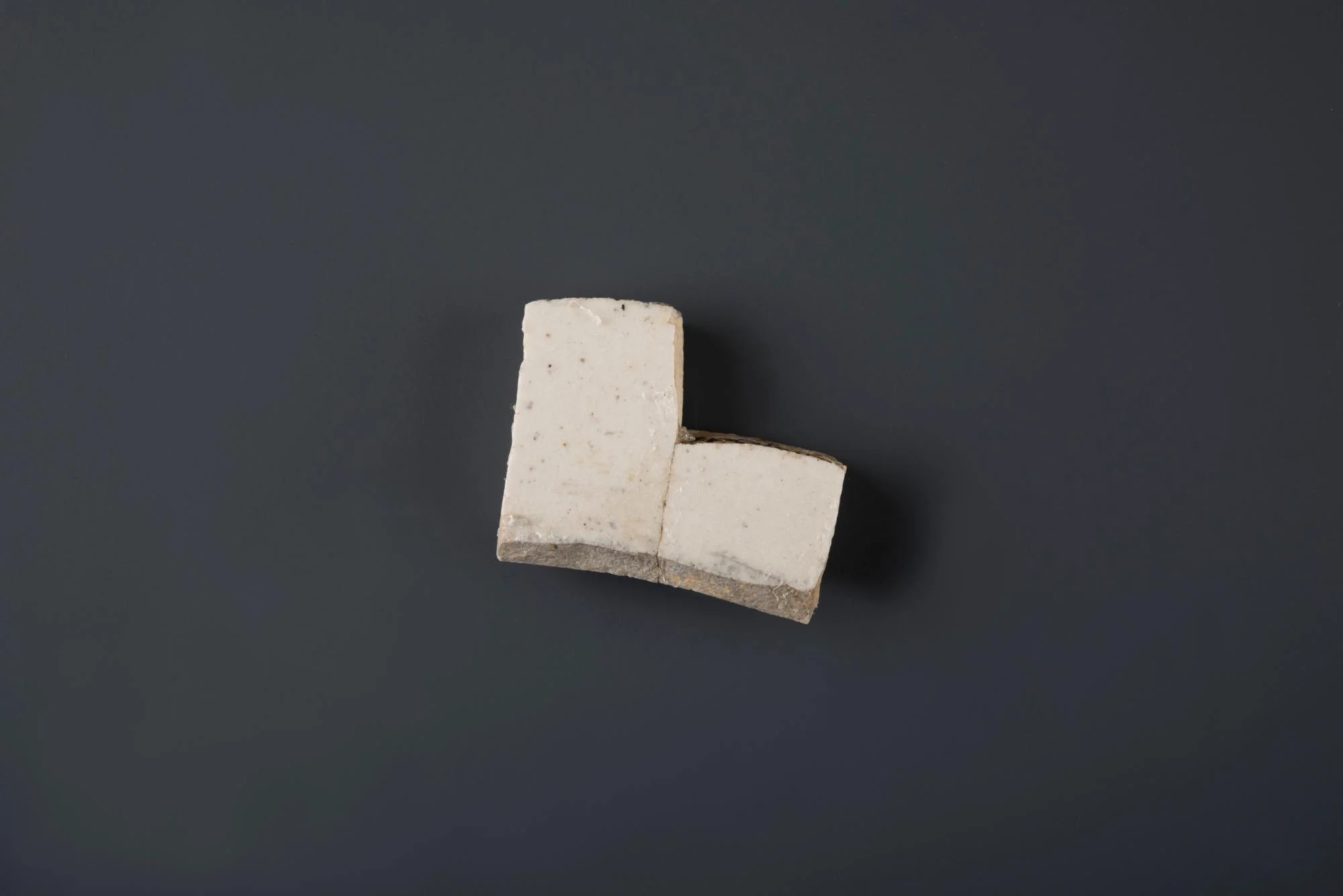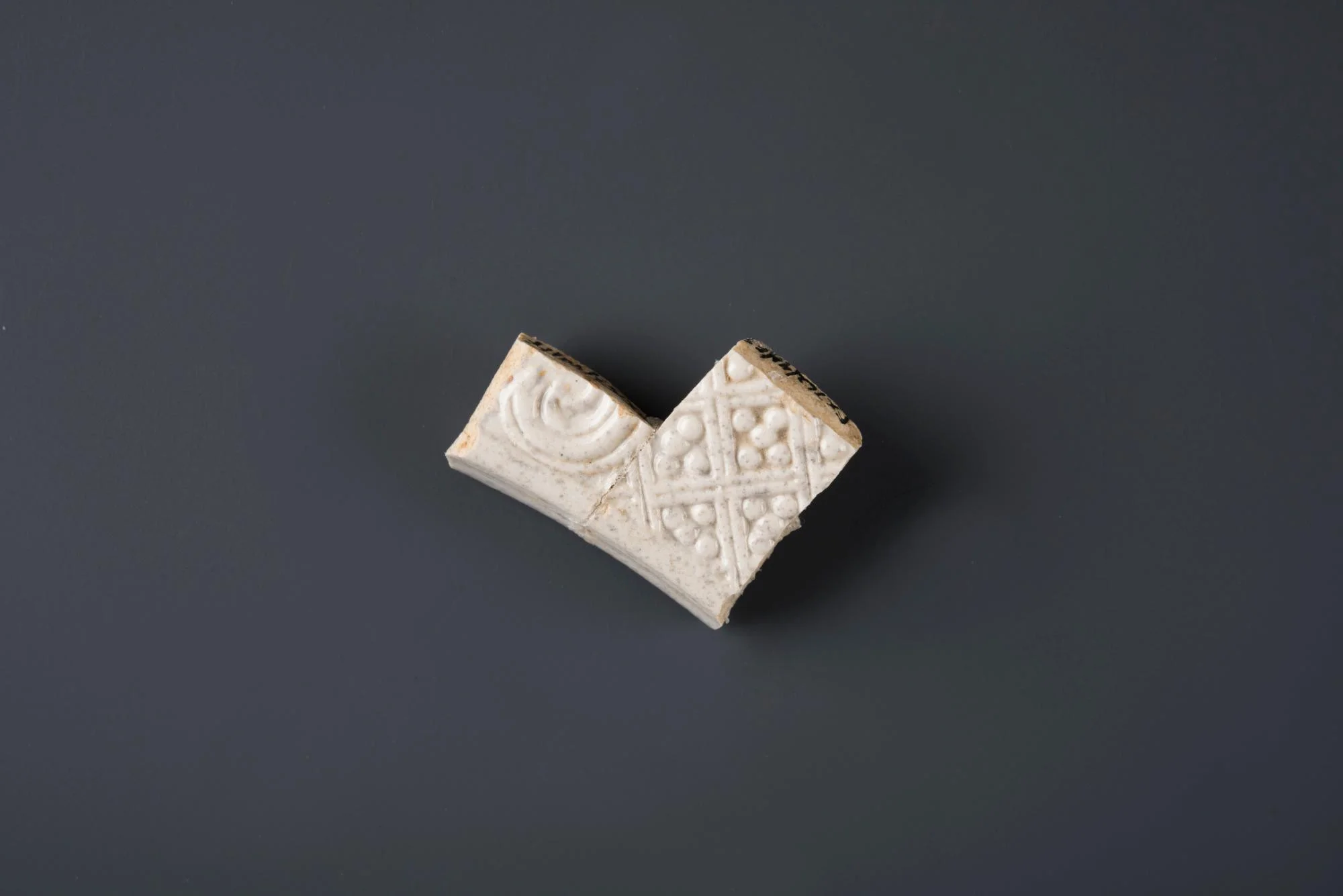Notes
This fragment of white salt glazed stoneware is a portion of a plate rim decorated by press molding. This white bodied ceramic was produced by combining naturally white clays with ground and calcined flint. In the process of press molding, clay sheets were pressed into block molds to form both the vessel shape and the decorative elements. The advent of using plaster of paris to create these molds in the Staffordshire potteries, beginning in the 1740s, greatly increased the ease of manufacturing such crisply decorated vessels and therefor increased the availability of these wares in British and colonial stores and homes. George Washington received a substantial order of “white stone” plates, dishes, and assorted other vessels in 1758, and continued to supplement these wares in the following years.
The particular decorative pattern on this rim sherd is called “dot/diaper/basketweave” by archaeologists. This pattern of decoration is found at nearly all sites dating to the mid- and late-eighteenth century at Mount Vernon. The prevalence of the pattern likely suggests it adorned the majority of Washington’s orders for this ceramic.
Object Type
Where Was It Found?
Project Site: House for Families [more details]
Material
Vessel
Manufacturing Technology
Form
Completeness
Decorative Technology
Decorative Patern
Date
1759-1769
Country of Origin
Dimensions
19.31mm x 6.31mm x 23.41mm (W x H x L)
Illustration shows object in comparison to the size of a quarter
Weight
3.6 gram(s)
Object Number
1890407 WSGSW V.22
DAACS Number
1890407
Project: House for Families
The structure identified as the “House for Families” on the 1787 Vaughan plan likely housed the majority of the enslaved population living at the Mansion House Farm for much of the second half of the eighteenth century. The building was in existence from circa 1760 until it was demolished in late 1792 or early 1793. The archaeological evidence for the structure consisted of a brick-lined storage cellar (44FX762/40-47) measuring roughly six feet by six feet. Historically the cellar served as a handy trash receptacle once it ceased to be used for its original storage function, and through extensive excavation has yielded an extremely rich assemblage of household refuse. The analysis of these remains offers the opportunity to study important aspects of the daily lives of Mount Vernon's enslaved community.
See All Objects From this Dig


 Ceramic
Ceramic Dot, Diaper, and Basketweave
Dot, Diaper, and Basketweave